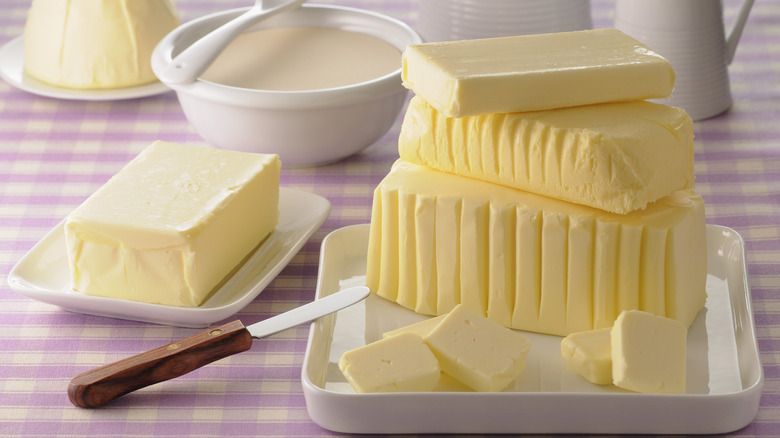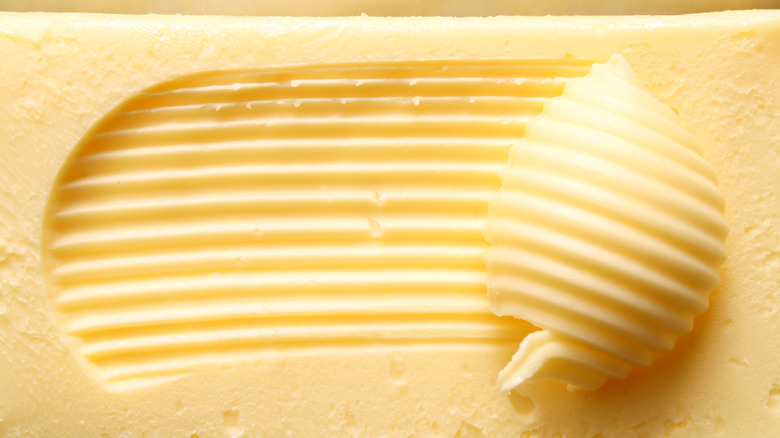Baking With European Butter Could Be A Ticket To Disappointing Texture
In the world of baking, European-style butter is the end-all, be-all hot commodity. Like a high-end vanilla extract or artisan baking chocolate, it's the pricier and richer-tasting option for bakers looking to put quality before quantity, and there's a reason for the fanfare.
As opposed to sporting the traditional 80% milk fat in American-style butter, European-style butter offers anywhere from 82% to 86% milk fat due to standards issued by the E.U. In addition, European-style butter contains less water in its formula. This slight change in fat content makes all the difference in baking, imparting a richer, more buttery flavor to cakes, pastries, and more. On the face of it, you should be able to add European-style butter to every recipe and gain an instant flavor boost without any issues, but there's a catch. While the flavor may be richer, the texture will inevitably change, and not for the better.
First, the extra butter fat weighs down the crumb of your baked good, leading to flatter, greasier results. Second, the decreased amount of water can lead to a drier baked good.
Too much of a good thing
So how can you avoid drowning your baking in too much butterfat? Well, respect what type of ingredient a recipe calls for. Most blogs and food brands specify which type of butter they typically use in either the ingredient section of a recipe or in an online ingredient guide — this is particularly true if the brand has an exclusive partnership with a butter brand — but if the recipe is vague about which butter it uses, consider the source. Is it an American recipe for chocolate chip cookies? Opt for American-style butter. Or is it a traditional French recipe for croissants? Choose European-style butter.
Still, if you're stuck on the idea of using European-style butter for your American-style recipe, there are a couple of ways you can avoid the common pitfalls. First, try chilling your dough, as European-style butter will melt faster than lower-milk-fat butter. This is especially important when working with laminated pastries like croissants or with butter-rich pie crust, as the heat from your hands and the roll-out process will lead to greasy butter puddles. Second, you can reduce the amount of butter called for by a quarter, to even out the buttery richness. So if a cookie recipe calls for 1 cup of American-style butter, consider using ¾ cup of European-style butter. Either way, be sure to pay attention to what a recipe calls for because, with baking, the devil is always in the details.

